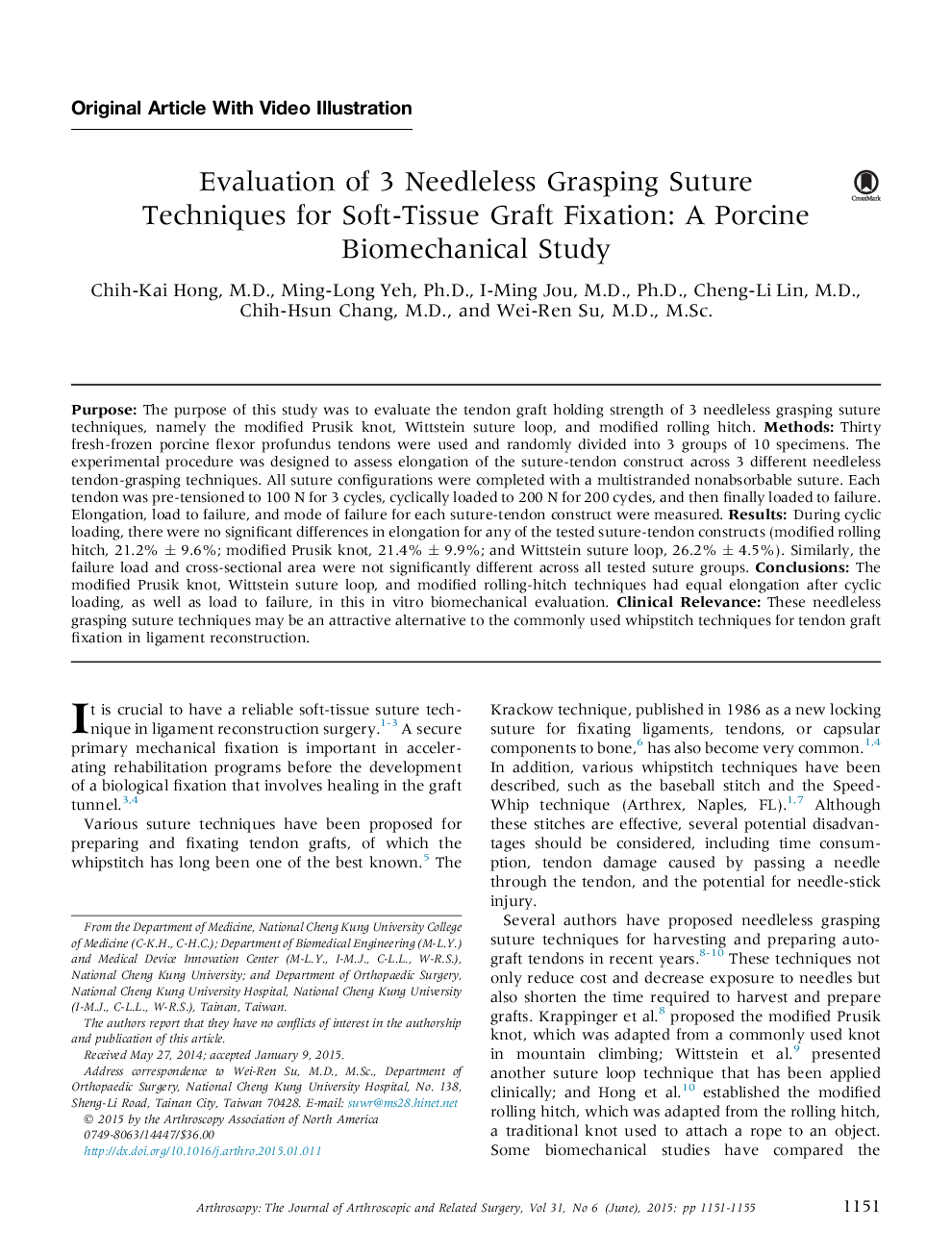| Article ID | Journal | Published Year | Pages | File Type |
|---|---|---|---|---|
| 4042095 | Arthroscopy: The Journal of Arthroscopic & Related Surgery | 2015 | 5 Pages |
PurposeThe purpose of this study was to evaluate the tendon graft holding strength of 3 needleless grasping suture techniques, namely the modified Prusik knot, Wittstein suture loop, and modified rolling hitch.MethodsThirty fresh-frozen porcine flexor profundus tendons were used and randomly divided into 3 groups of 10 specimens. The experimental procedure was designed to assess elongation of the suture-tendon construct across 3 different needleless tendon-grasping techniques. All suture configurations were completed with a multistranded nonabsorbable suture. Each tendon was pre-tensioned to 100 N for 3 cycles, cyclically loaded to 200 N for 200 cycles, and then finally loaded to failure. Elongation, load to failure, and mode of failure for each suture-tendon construct were measured.ResultsDuring cyclic loading, there were no significant differences in elongation for any of the tested suture-tendon constructs (modified rolling hitch, 21.2% ± 9.6%; modified Prusik knot, 21.4% ± 9.9%; and Wittstein suture loop, 26.2% ± 4.5%). Similarly, the failure load and cross-sectional area were not significantly different across all tested suture groups.ConclusionsThe modified Prusik knot, Wittstein suture loop, and modified rolling-hitch techniques had equal elongation after cyclic loading, as well as load to failure, in this in vitro biomechanical evaluation.Clinical RelevanceThese needleless grasping suture techniques may be an attractive alternative to the commonly used whipstitch techniques for tendon graft fixation in ligament reconstruction.
